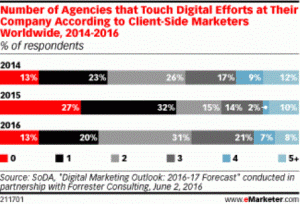— May 13, 2018

rawpixel / Pixabay
The more we automate business processes, the more we lose sight of our customers. It’s a reality in SaaS and practically every industry in the world. Though technology has undoubtedly made our jobs easier and improved the overall customer experience, it’s also distanced us from the people we serve. This is especially true for product teams, who are increasingly separated from the end users they’re building for.
Luckily, reconnecting with customers isn’t all that hard. You just have to make the choice to do it. Here are some simple tips on re-engaging your end users and building a customer-centric product strategy.
Creating a Product Strategy that Drives Adoption
1. Collaborate with customer-facing employees.
To understand what kind of features your customers want, turn to those who interact with them on a regular basis. They’re tapped into the “pulse” of your target audience, so it’s important to bring them into the discussions when you’re thinking about adding, removing or improving features.
Too often, executives make decisions based on assumptions rather than experience. They may think they know their customers better than they do, or they assume a competitor’s recently released feature is something they should mimic. Sometimes, this method leads to unnecessary or unwanted changes due to the lack of communication between the user base and the upper-level executives.
Rather than working off assumptions, talk to your support agents, your sales reps, and anyone else who has first-hand experience with customers. Get their take before you develop new features and plan the product roadmap.
2. Rethink how you prioritize feature requests.
Most product teams have a love/hate relationship with feature requests. Sure, they can inspire innovation and help you build more customer-centric products, but they can also be a major dredge to analyze, prioritize, and implement. If you find yourself constantly ignoring or rolling your eyes at new feature requests, it may be time for a new approach.
There are plenty of tried-and-true methods for managing feature requests. For example, Kayako uses a Feature Prioritization Matrix to rank feature requests based on four weighted factors, which focus on customer impact and perceived value. This formula helps them combat subjective decision-making, rule out unrealistic requests, and introduce more features their customers truly want.
3. Create a beta program.
When you’re launching a new product or feature, it’s easy to get caught up in the momentum of the release and overlook minor flaws. Luckily, your customers won’t hesitate to point them out! The best way to catch them before launch? Beta test.
When you give a select group of customers early access to new products, you get direct feedback from your target audience. Customers use your products differently than you do, so they can catch bugs and user experience gaps that your QA team might miss. Plus, inviting customers to beta-test products gives them a sense of validation that can improve customer loyalty.
So how do you create a beta program that gets results? First, ask the right questions. Here are some things you can ask beta members when they’re trialing a new product or feature:
- What are you primarily using this for?
- What’s the best aspect of this feature?
- What’s the most confusing part of this feature?
- How much would you pay for this?
- Why wouldn’t you use this feature again?
- What would you add or change?
- If you could fix one thing, what would it be?
Remember to be specific. Generic questions like “Is this feature useful?” won’t give you actionable feedback. You’re trying to draw pointed, detailed feedback from your beta users to make sure the feature is spot-on when it’s launched to the public.
4. Send an annual Voice of the Customer survey.
Want to collect a wide range of user feedback at once? Sending a Voice of the Customer survey once a year can help you stay in tune with customer needs and identify common challenges. You can include standardized metrics like Net Promoter Score, which give you a clear picture of changes in customer sentiment year by year.
In addition, you can use the feedback to better define your audience and improve your go-to-market strategy. If you’re using a CRM like Salesforce, you can even map survey results to customer records and build out advanced reports and dashboards using the data. With an enhanced picture of your customer base, you can customize your content, sales pitches, and messages to deliver personalized service throughout the customer journey.
5. Host focus groups.
Survey tools like GetFeedback make it easy to stay in sync with customers, but there’s something to be said about hearing feedback first-hand. By gathering customers together, you can ask targeted questions and allow customers to engage with one another in a way that can’t be done online.
Here are a few tips to pull off a successful focus group:
- Invite relevant users that align with the kind of feedback you’re looking for
- Aim for 8-10 participants
- Have a list of specific questions premade
- Use a variety of questions and activities (role playing, word association) to maintain interest
- Select a strong moderator to keep the conversation on track
- To limit bias, the moderator shouldn’t be someone inside your company
- Record the focus group
- Have a plan to analyze and use the feedback collected
6. Keep an eye on the competition.
You have to know what your competitors offer. That doesn’t mean you have to mimic everything your competitors do. Quite the contrary. They could introduce a new feature that flops, attempt to debug a feature and make it worse, or go through a rebranding that customers aren’t fond of.
What’s the best way to “spy” on your competitors? For starters, use their products. Nothing will get you up to speed faster or give you a clearer sense of their user experience. There are also plenty of tools that can help. Set up Google Alerts to be notified when your competitors are mentioned online, and use SEMRush to view your competitor’s online data, like organic keywords and rank, ad keywords, and website traffic.
How does your product team prioritize feature requests? Let us know in the comments!
Business & Finance Articles on Business 2 Community
(44)
Report Post








